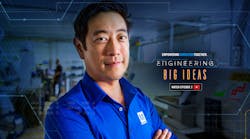Speeding the Idea-to-Prototype Process with the Arduino Open-Source Ecosystem
Technically, an open-source ecosystem is “open” in that anyone may contribute to and draw upon the work of an entire community of developers. Interestingly, open source has come to mean that the doors from idea to prototype to production are also now flung wide open. The story of Arduino is a great example.
The Rise of the Makers
Decades ago, if you had an idea for a new product, you had to find a company that could make it for you. You would need to write a formal specification of the product for the manufacturer, which could be challenging and just the first step of a very rigid design process. Iterations to incorporate new features or further adapt the product concept were time-consuming and expensive. Over the years, this way of innovation and design led to a somewhat proprietary approach, with products and systems that couldn’t connect or interact. Knowledge became latent.
In the mid-1980s, the open-source software movement gathered momentum, accelerating rapidly in the early 1990s with the availability of Linux. In turn, this spawned a raft of free, open-source software tools, applications, and online communities, changing the landscape of the software industry forever.
By the mid-2000s, the same open-source ethos came to impact the electronics hardware industry with the availability of microcontroller-based modules and boards that anyone could buy and use to experiment. This nurtured a new community of hobbyists (“makers”) who have a far greater range of hardware and software available to them than ever before. The maker movement emerged as an open-source-based and knowledge-sharing community of individuals who thrive on new ideas and helping others.
As the maker community grew, so did the availability of software tools and hardware platforms, which, as volumes grew, reduced the time and costs associated with designing and prototyping new products. Barriers to innovation were brushed aside as it became possible for anyone with an idea to design and build a prototype. Community participants filled the gaps of an inventor’s knowledge, further advancing the collective knowledge of the maker community and leading to the democratization of innovation.
The Arduino Open-Source Ecosystem
One of the first open-source hardware single-board computers was the Arduino. In its new Engineering Big Ideas series, Mouser Electronics and celebrity engineer Grant Imahara interviews Arduino co-founder and CTO Massimo Banzi, learning Arduino’s background and how it has become the perfect prototyping platform for innovators. Designed by Banzi, the compact, low-cost 8-bit Arduino microcontroller board gained adoption by a worldwide community of makers, including students, hobbyists, programmers, and artists eager to express their creativity and prototype an idea.
From launch, Arduino was a complete hardware and software ecosystem, allowing users to immediately start programming code in a free, simple-to-use, open-source integrated development environment (IDE). Arduino was also designed to enable interaction with the real world through extensive analog and digital interface capabilities. Whether you wanted to switch an LED on and off, or had ambitions to prototype a smart home-automation system, Arduino made it possible.
Most importantly, Arduino has made learning about embedded computing and real-world interfacing accessible to all—not a dark art just for formally trained software and hardware professionals. For example, the IDE supports multiple platforms—including Linux, Mac OS X, and Microsoft Windows—and a wide variety of board form factors are readily available.
The Arduino architecture has evolved to incorporate 32-bit microcontroller versions, a field-programmable gate array (FPGA), wireless modules, and wired networking capabilities. The new boards provide specific wireless connectivity support such as the unlicensed industrial, scientific, and medical (ISM) spectrum using long-range, low-data-rate protocols such as Sigfox and LoRa.
The physical layout of the boards is also open source, allowing third-party vendors to adopt the Arduino boards’ pinout layout and develop expansion “shields” that provide extra functionality and capability to the host Arduino board. Likewise, the Arduino hardware design uses readily available components and is entirely open source, allowing others to replicate Arduino boards under a Creative Commons Attribution-ShareAlike license agreement.
Prototype to Production Ready
It’s not just non-technical innovators that have embraced the ease of prototyping new ideas using Arduino. Professional engineers are also using the comprehensive range of boards and shields to showcase design concepts and rapidly bring new ideas to life. Thanks to the open-source community aspects of Arduino, makers and developers are sharing their code, libraries, and drivers for all to use.
The Arduino programming language is C/C++, but you don’t have to be an expert developer to start your first program. The IDE includes a comprehensive set of examples that help you experiment and learn new techniques. Also, more experienced developers who have written drivers or libraries for specific hardware components, such as LCD modules, I2C sensors, and GPS receiver modules, can share them on open-source development sites like GitHub.
For innovators who have finished prototyping their ideas and want to take it into commercial production, Arduino’s open-source approach, using readily available components, open-source schematics and firmware, streamlines the transition.
Arduino Products Available from Mouser
Global distributor Mouser Electronics has a long history of supporting innovators of electronics-based designs by supplying technical resources. Mouser provides the complete range of open-source boards from the latest version of the original Arduino Uno, a complete Arduino Starter Kit, and the newest addition to the Arduino family, the Arduino Nano 33 BLE Sense. From technical articles, how-to guides, engineering-focused eBooks, and a plethora of new product information, engineers and innovators can find the answers to their technical questions in Mouser’s Technical Resource Center. The Bench Talk for Design Engineers blog also hosts topical and informative articles on a wide range of subjects from a community of engineers, suppliers, and industry specialists.
In the second video of “Empowering Innovation Together, Engineering Big Ideas” series, celebrity engineer Grant Imahara interviews Arduino co-founder and CTO Massimo Banzi. They explore how a creative idea transitions into a real-life technology and how designers and developers can explore the capabilities and limits of an idea by creating a prototype.

